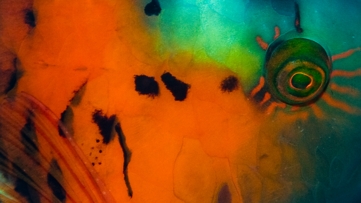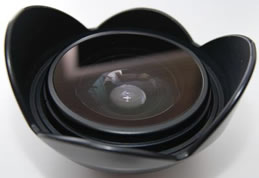
| Home |
| Colors of the Reef |
| Search the Reef |
| Science and the Reef |
| Equipment |
| New |
| Links |
| Contact |
| Interna |
Camera: Olympus C-7070
September 2007. Between May 2005 and September 2006 I was using an Olympus C-7070 digital camera with the PT-027housing. The C-7070 is the ideal point and shoot camera for underwater use: (1) 27 mm (equivalent) wide angle lens, (2) hot shoe for connecting external strobes, (3) quite short shutter lag. Largest disadvantage: it was less than one year on the market, which I found very disappointing.
The PT-027 underwater housing is usable to 40 m and tailor made for the C-7070. The PT-027is made of clear polycarbonate, which allows to control the O-rings visually after closing the housing. The camera fits exactly in the housing, and without any adjustment everything works very smoothly. It is amazing how well the camera can be controlled underwater. I never had any leak, however, after a couple of dives the housing got small cracks and had to be replaced by Olympus. Since the PT-027 was still on warranty it was replaced by Olympus without any problems. I am not sure if the cracks were the result of the combination of cold water and pressure or caused by stress in the polycarbonate during manufacturing the housing. The walls of the PT-027 are quite thin, and the whole set-up should be handled with great care not to break it.
To connect external flashes (I used a Sea&Sea YS-60 S and a YS-90 flash) to the PT-027several solutions based on the TTL flash adaptors made by HeinrichsWeikamp (see Links) can be used:
(1) A Digital Adaptor is attached to the cable of the YS-60 S, which allows to use the external strobe as a slave flash triggered and controlled by the internal flash. TTL metering works amazingly well, although not as precise as a directly wired external strobe. The internal flash has to be blocked properly to avoid backscatter.
(2) A TTL converter is connected to the hot shoe of the camera and the original Olympus bulkhead replaced by a Nikonos compatible bulkhead. The TTL converter transforms the Olympus flash protocol into the Nikonos protocol which is “understood” by most external strobes. The external strobe is connected via a conventional Nikonos type cable. This combination avoids to use the internal flash and is more precise than optical coupling.
Wide angle pictures were taken with the Inon UWL-100 28AD lens attached to the corresponding port manufactured by Inon. This lens works perfect and has underwater a view angle of approximately 100°. Very convenient is the possibility to quickly change the lens underwater, which allows to take both wide angle and macro pictures during the same dive. This I am missing with the DSLR equipment I am using now. The quality of the wide angle pictures is very good in the center, however, at the edges it is much less sharp and shows some chromatic aberration. This is normal for a wide angle lens with a flat port underwater. These problems could be solved with a dome port for the UWL-100, which I didn’t use. In addition, some vignetting can be seen at the widest end of the C-7070, probably because the lens is optimized for use with 28 mm cameras and not 27 mm as the C-7070. Slightly zooming in solves this problem.

